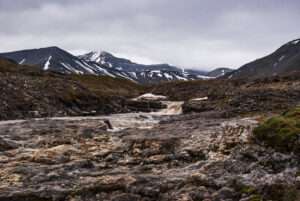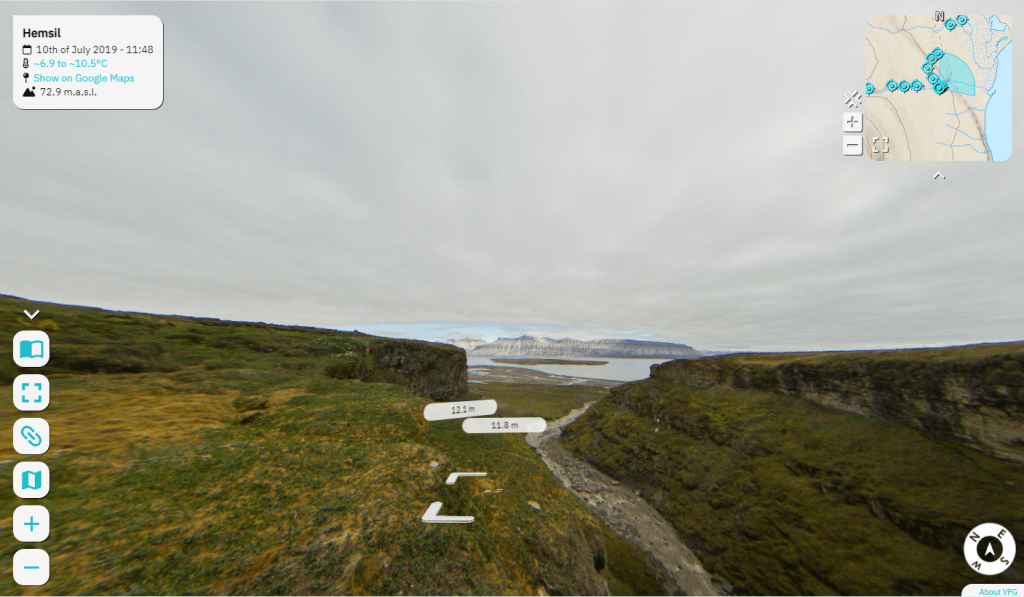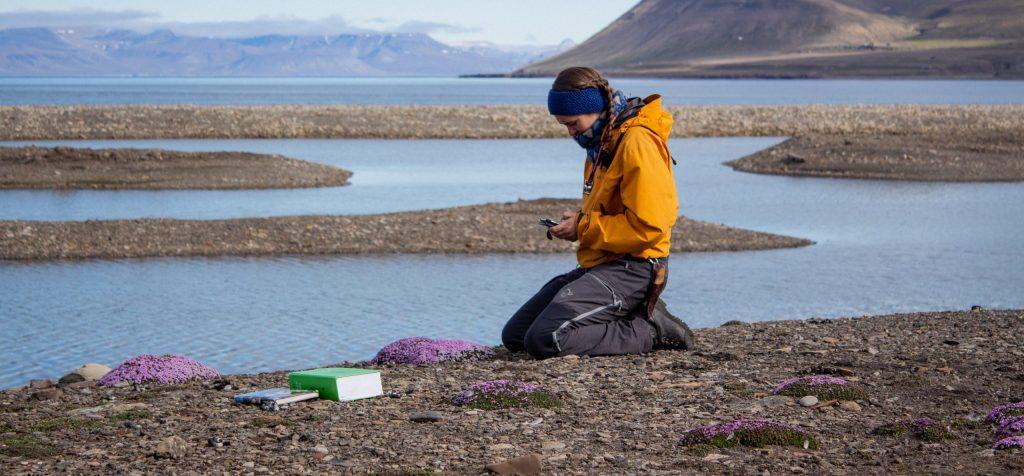• Learning Arctic Biology •
Want to learn about Arctic terrestrial biology?
Video: Tina Dahl and Marcos Poricres
• Browse by topic •
• Digital Tools •
360° Virtual Field Guides
Explore a variety of locations and learn about its biology, history and more. All in 360 degrees!
ArtsApp - Digital Key
A digital key for Svalbard’s flora, with specific keys for vascular plants and grasses.
Read about...

Definition of the Arctic and main study system
The Arctic is named after the northern star constellation “Arktos”—Greek for “bear”. It consists of the Arctic Ocean and surrounding landmasses. Depending on the definition

Fungi in Svalbard
A large number of mushroom species grow in Svalbard. Most are small, some are poisonous, while others are edible and tasty. Fungi have most of

Nutrient input
In nutrient enriched areas, organic soils of over 10 cm depth may accumulate, illustrating the impact of nutrient flow from the marine environment to the
Diversification of Arctic flora and fauna during the Pleistocene
On an evolutionary time-scale, the arctic flora and fauna have had very short time to develop. This partly explains the low number of truly endemic
Biogeography of invertebrates
The biogeography of the invertebrate fauna of the Arctic is poorly known but can be generally described as a Holarctic fauna but with local endemics

Archaea
Compared to Bacteria and Eukaryotes, Archaean diversity, physiology and ecology is still very little explored. Many Archaea are extremophiles – living in extreme environments –

Ancient DNA reveal history
DNA, like pollen, accumulate in sediments Paleoenvironmental reconstructions have traditionally been based on fossil records and pollen sequences in lake sediments. However, in the last
Invertebrate habitats in Svalbard
Invertebrates in Svalbard can be found just about anywhere, flying, under rocks, in the soil, crawling on the vegetation, in the streams and ponds, even
What are bryophytes?
Evolutionary origin Bryophytes belong to the embryophytes, which include all land plants. Evidence from structural, biochemical, and molecular data supports the view that bryophytes and all
Ecosystem role of bryophytes
Bryophytes have many important ecosystem functions in the Arctic. These include: Regulation of hydrology In many habitats, bryophytes control soil and vegetation hydrology (Beringer et
Systematics of fungi
Modern fungal systematics is based upon genetic analysis. However, and structure of the hyphal cells are also important. Below you will find an overview of
Viruses
What is a virus? Viruses are infectious agents that replicate exclusively within a living cell. Viruses can infect all types of organisms, from animals and
Saprotrophic fungi
Saprotrophic fungi degrade dead organisms or their remains, such as litter or dung. Depending on their mode of breaking down cellulose or lignin, we recognise
Life cycle of bryophytes
Like other plants, bryophytes change between two generations with different morphology and function (heteromorphy). Unlike vascular plants, in bryophytes the haploid gametophyte (1n) is the dominating generation.
What is a fungus?
The fungal kingdom (Fungi) is related to the animal kingdom. They separated approximately 1.5 billion years ago. Like animals and plants, fungi are eukaryotes, which
Parasitic fungi
Parasitic and pathogenic fungi obtain their nutrition from other living organisms, and have a negative effect upon the individuals – hosts – they are parasites
Useful learning resources

bioCEED resource for learning statistics, tutorials for the statistical computing language R and more!
How do you start with academic writing? This is the prefect resources for those who are about to write their first thesis/poster/essay etc. or looking for new tips when it comes to academic writing.
Svalbox is all about Svalbard geology. Svalbox aims to compile and acquire key data sets and publications to provide an interactive 3D geoscientific database of Svalbard.
The UNIS Executable Books page provides an overview of all eBooks available and/or used for teaching at the University Centre in Svalbard (UNIS).










